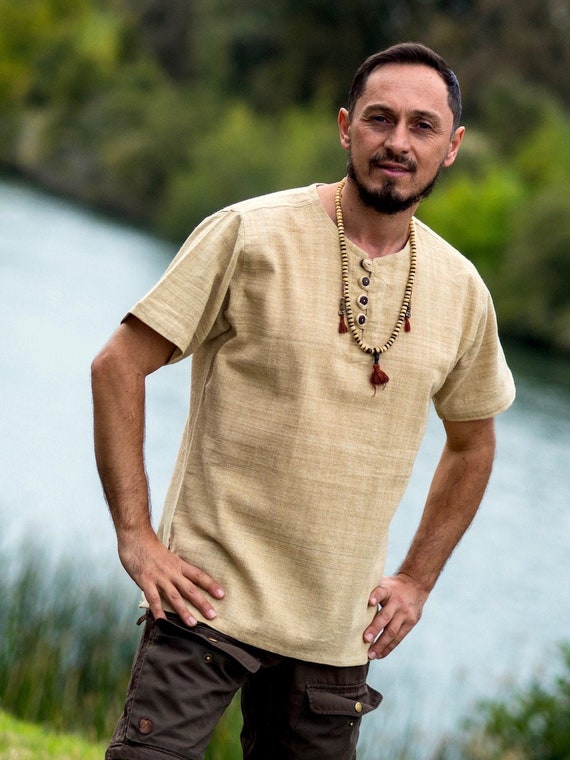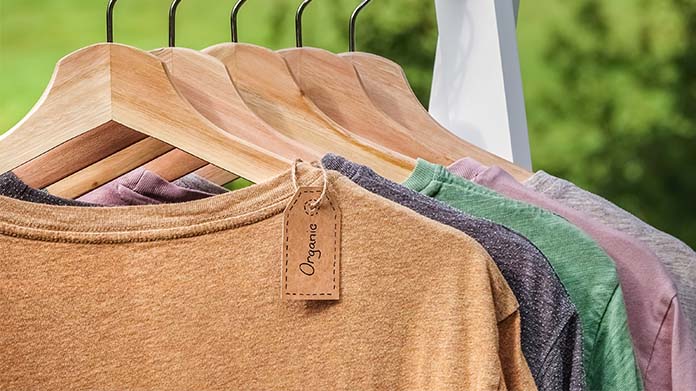Free Reasons On Deciding On Bamboo Clothing
Wiki Article
What Are The Main Differences Between Hemp And Cotton In Terms Of The Use Of Water, Pesticides And Herbicides, Etc.?
Hemp is a eco-friendly crop than cotton for a variety of reasons.
Hemp Hemp is regarded as a plant that has less water requirements compared to cotton or other crops. It is believed to be an herb that flourishes under very little irrigation. Hemp is typically grown using rainwater in several areas. It's an excellent water-efficient plant.
Cotton- Cotton is notoriously water-intensive. The cultivation of cotton often requires extensive irrigation, which can drain local water resources and result in water scarcity in water-stressed regions. Cotton farming has been criticised due to its high water use.
Pesticides & Herbicides
Hemp- Hemp naturally fights off pests and illnesses, so it's less likely to require herbicides or pesticides that are synthetic. Some hemp plants may require some pest control measures. However, the overall use of chemical inputs for certain crops is lower like cotton. Organic hemp can be grown virtually without pesticides.
Cotton - The conventional cotton farming industry rely heavily on herbicides and insecticides that are synthetic to fight off pests. These chemicals can cause negative environmental impacts including water and soil pollution as well as harm to species not intended for control and the development pesticide-resistant insects.
Summary: Hemp is a more sustainable crop when it comes using water, pesticides and herbicides.
Hemp is a great crop that requires little water and is often grown by rainwater or minimal irrigation.
Hemp is naturally invulnerable to disease and pests This reduces the need for pesticides.
Hemp production requires less synthetic pesticides compared to cotton.
However, it is crucial to recognize that sustainable and eco-friendly methods can vary between cultivators and in different regions. Organic farming practices can enhance sustainability by decreasing the use of synthetic chemical and improving soil quality. In assessing the environmental impact of textiles and clothing making sure to use organic and sustainable fibers, whether cotton or hemp, could aid in reducing the environmental footprint of the fashion industry. See the top rated see on hemp clothes for more recommendations including 100 hemp t shirt, patagonia hemp pants, hemp apparel, hemp active wear, hemp athletic wear, mens hemp t shirts, hemp pants womens, afends jesse dress, hemp tees wholesale, patagonia hemp island pants and more.

What Are The Advantages Of Hemp Fibers When It Comes To Carbon Sequestration?
Carbon Sequestration:
Rapid Growth- Hemp is a fast-growing plant that matures between 70-120 days, depending on the variety and growth conditions. During the rapid growth phase, hemp absorbs carbon dioxide from the atmosphere via photosynthesis. Carbon uptake is a significant factor in carbon sequestration and decreasing CO2 emissions from the air.
The hemp's capacity for high biomass production is well-known. The plant's dense and tall foliage generates a large amount of organic material. If this biomass is added into the soil or used for various applications in the garden, it may aid in the accumulation of organic carbon within soil, further sequestering carbon.
Sustainability:
Hemp crops require less herbicides and pesticides in comparison to other crops, such as cotton. The hemp's natural resistance to many pests and diseases means that it is less prone to chemical intervention. Organic hemp farming, particularly is a sustainable farming method by avoiding synthetic chemical substances.
Hemp is a great water-efficient crop, especially when compared with other crops that require a lot of water, such as conventional cotton. This is why it is more sustainable in areas with limited water resources.
Hemp's deep-rooted system can improve the health of the soil. Its deep roots can help reduce runoff by stabilizing soil and enhancing soil structure. Hemp cultivation can also enhance microbial activity in the soil, promoting nutrient cycling and overall soil fertility.
Hemp is a great crop for rotational systems. Crop rotation refers to the process of alternating between different crops on the same field. This practice can break the cycle of diseases and pests as well as reduce soil erosion and enhance soil structure. The role of hemp in crop rotation is a key factor in the sustainability of farming practices.
Crop Rotation
Hemp is a diversified crop that can be used in a rotation with vegetables, grains, and legumes. This helps farmers to maintain the quality of their soil, reduce the risk for pests, diseases and other issues related to crops and help promote a healthy process of nutrition.
Soil Improvement- Hemp's deep roots can penetrate the soil and aerate it which reduces compaction and increases the water's infiltration. A better soil structure can be a benefit to subsequent crops following hemp.
In summary, hemp fibres improve the storage of carbon, sustainability, and crop rotation practices due to their rapid expansion and production of biomass. They also require a minimum of chemicals, make efficient utilization of water, and are compatible with crop rotation systems. The hemp fibers produced by this sustainable, regenerative farming practice are a great choice for textiles. Have a look at the recommended a replacement for blog recommendations including hemp jeans mens, hemp jeans, mens hemp trousers, hemp shorts, wholesale hemp fabric, 100 hemp shirt, women's all seasons hemp canvas bomber hoody jacket, hemp jacket, organic hemp underwear, hemp active wear and more.

What are the major differences between bamboo and hemp fibers?
There are a variety of differentiators between bamboo and hemp with their distinctive characteristics. Here are some of the main distinctions between hemp fiber and bamboo fiber- 1. Plant Source-
Hemp- Hemp fibers are taken from the hemp stalks plant, specifically from the bast fibers on the outside. Hemp is a versatile plant that grows quickly and has been used to make different products for centuries.
Bamboo fibers are made of bamboo pulp. Bamboo is a species of grass with rapid growth, as well as its capacity to regenerate rapidly.
2. Fiber Characteristics
Hemp- Hemp fibers are known for their strength and durability. They are strong natural fibers which soften and become more supple after washing, which makes them suitable to make long-lasting textiles.
Bamboo- Bamboo fibres are soft and silky with a silky smooth texture. They are weaker than hemp, and are more fragile. However they are highly sought-after because of their softness when applied on the skin.
3. Texture The texture, feel and look
Hemp- Hemp fabrics have a textured, slightly coarse feeling in their natural state. While it can be an incredibly comfortable fabric, the texture is distinct from bamboo.
Bamboo- Bamboo material is soft, smooth and silky. The fabric is described as having a soft, silky, and cottony texture. It's very comfortable.
4. Breathability (and moisture-wicking)-
Hemp- Hemp fibres are naturally water-wicking, breathable and allow air circulation. They absorb moisture and permit air circulation. They keep you cool and dry even in the hottest temperatures.
Bamboo fibers are also able to absorb humidity and are highly breathable. They have micro-gaps in them, which enhance their ability to regulate humidity and temperature. This keeps you at ease in all environments.
5. Environmental Impact-
Hemp Hemp can be regarded as an environmentally friendly fiber because of its fast growth rate, its low water needs, and resistance to insects. These attributes reduce the use of herbicides and pesticides. Hemp can also sequester carbon during its growing process.
Bamboo- Bamboo is renowned for its environmental sustainability. It is fast-growing, uses very little water and is able to be grown without pesticides or herbicides. Some bamboo species like Moso Bamboo, are thought to be sustainable.
6. Processing-
Hemp- Hemp fibers must be processed extensively to separate the bast fibers from the core. The process may involve retting, decoration, and mechanical separation.
Bamboo- Bamboo is typically produced by a chemical method known as the viscose-or rayon-process. This process involves chemically cutting down bamboo pulp. Closed-loop systems can be used to eliminate the chemical waste from some bamboo textiles.
7. Versatility-
Hemp- Hemp is versatile, with many uses including construction materials, clothing and textiles, and more.
Bamboo Fibers Bamboo fibers have been used in clothing, textiles and many other items.
Summary- Both hemp and Bamboo have distinct advantages and are sustainable. It depends on what qualities you are looking for in a product, and how environmentally conscious you are. Take a look at the best bamboo clothes recommendations for site tips including bamboo fitness clothing, boody bamboo underwear, short bamboo, bamboo cay christmas shirts, bamboo onesies, bamboo newborn clothes, bamboo long sleeve shirt, bamboo pajama pants, bamboo apparel wholesale, carter's bamboo pajamas and more.
